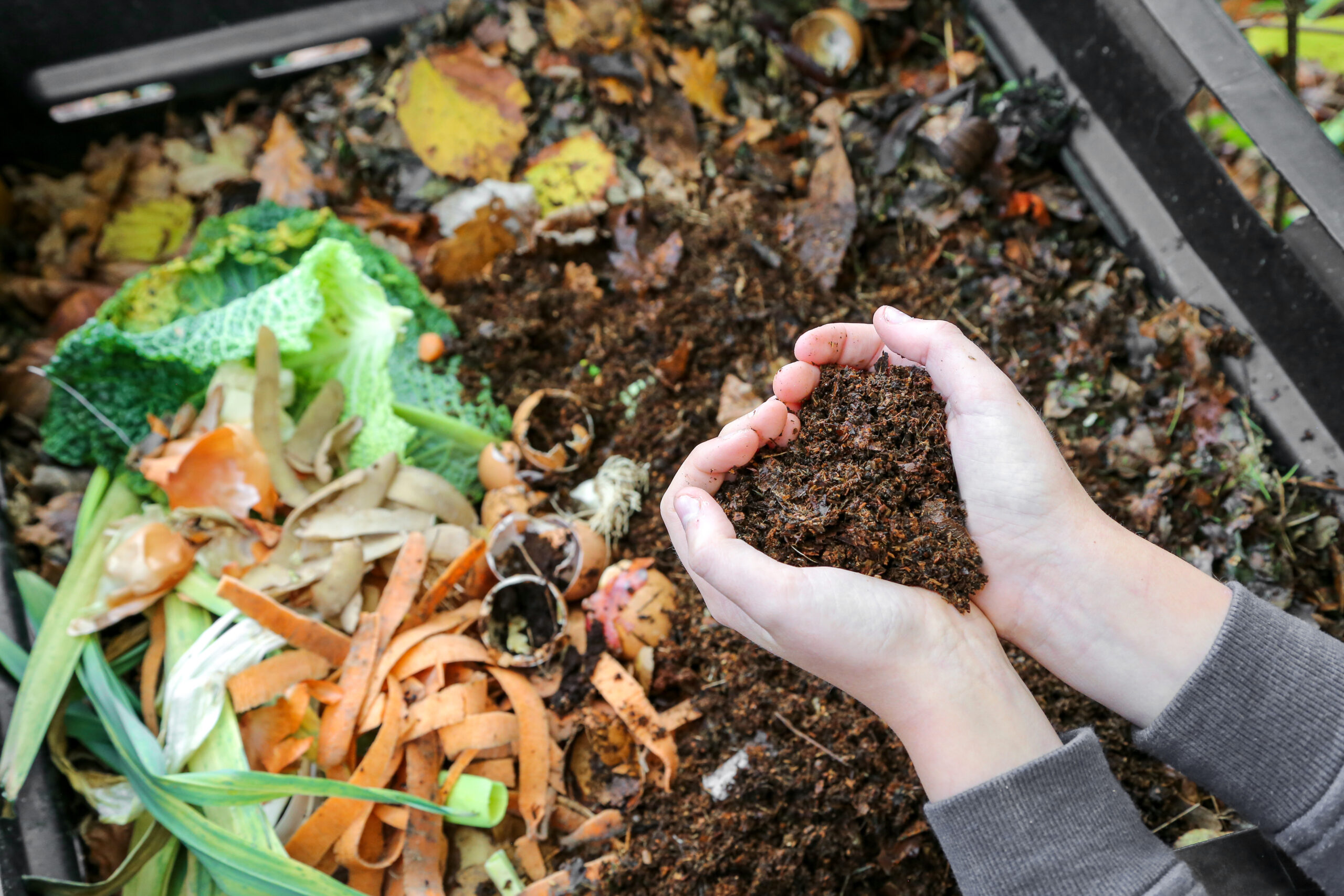
Compost is organic material that can be added to soil to help plants grow. Learn how to make it and help reduce greenhouse gases! According to the EPA, food scraps and yard waste together currently make up more than 30% of what we throw away and could be composted instead.
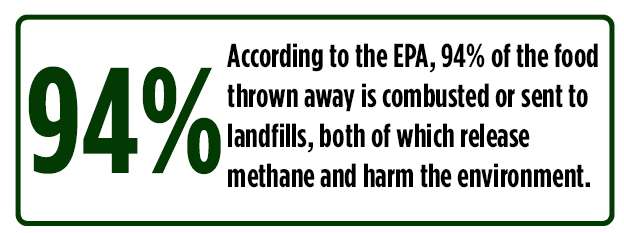
Composting is a win-win for the environment and your garden. Follow these simple steps to make your own and you’ll be on the way to leading a more sustainable lifestyle.
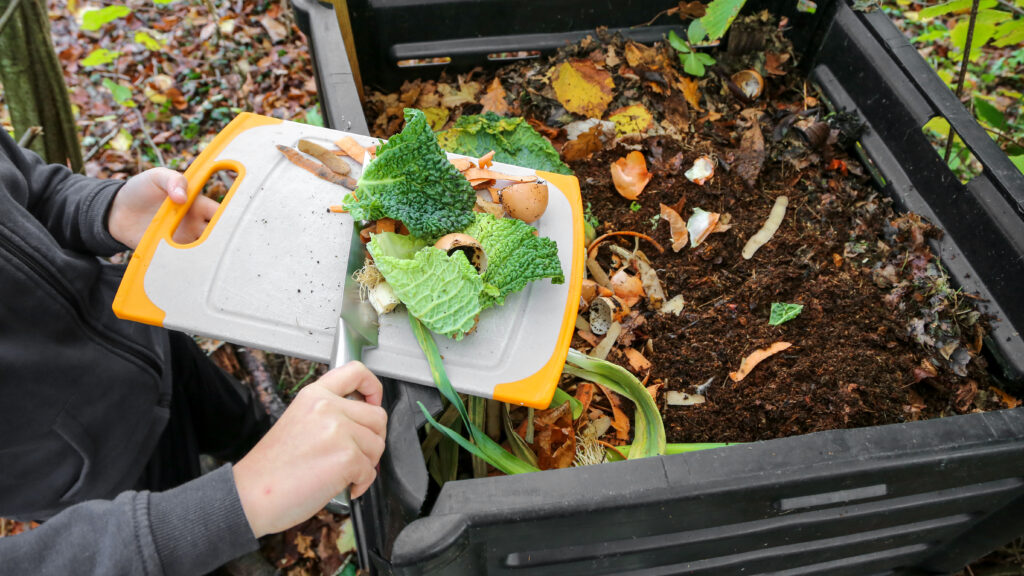
Start your a pile on bare earth.
This allows worms and other beneficial organisms to aerate the compost and be transported to your garden beds. Lay branches or straw first, a few inches deep. This aids drainage and helps aerate the pile.
Add materials in layers, alternating moist and dry.
Moist ingredients are food scraps, tea bags, banana peels, etc. Dry materials are straw, leaves, sawdust pellets and wood ashes.
If you have wood ashes, sprinkle in thin layers, or they will clump together and be slow to break down. Add a nitrogen source such as manure or green manure (grass clippings). This activates the compost pile and speeds the process along.
Keep compost moist.
Water occasionally, or let the rain do the job.
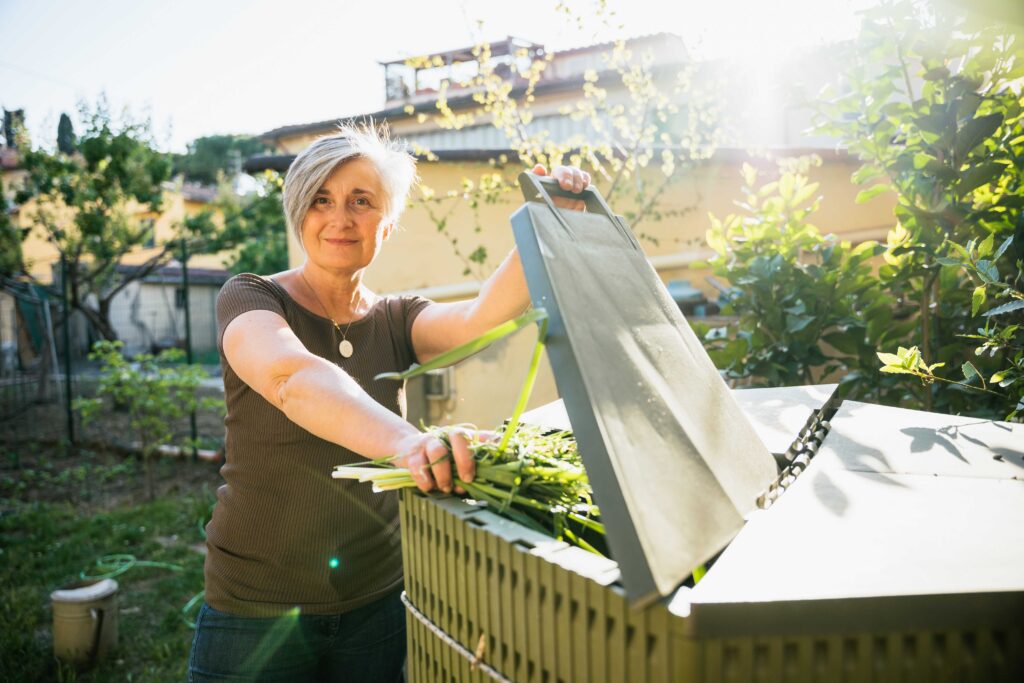
Cover your pile.
You can cover your pile with most anything, from plastic sheeting to old blankets. They key is to lock in moisture and heat, which are important for it. Covering also prevents the compost from being over-watered by rain. Do not soak compost.
Aerate the pile.
Every few weeks give the pile a quick turn with a pitchfork or shovel. This aerates the pile. Oxygen is required for the process to work and turning “adds” oxygen. You can skip this step if you have a ready supply of coarse material like straw.
Add new materials.
Once you’ve established your compost pile, add new materials by mixing them in, rather than by adding them in layers. Mixing or turning the pile is key to aerating the composting materials and speeding the process to completion.
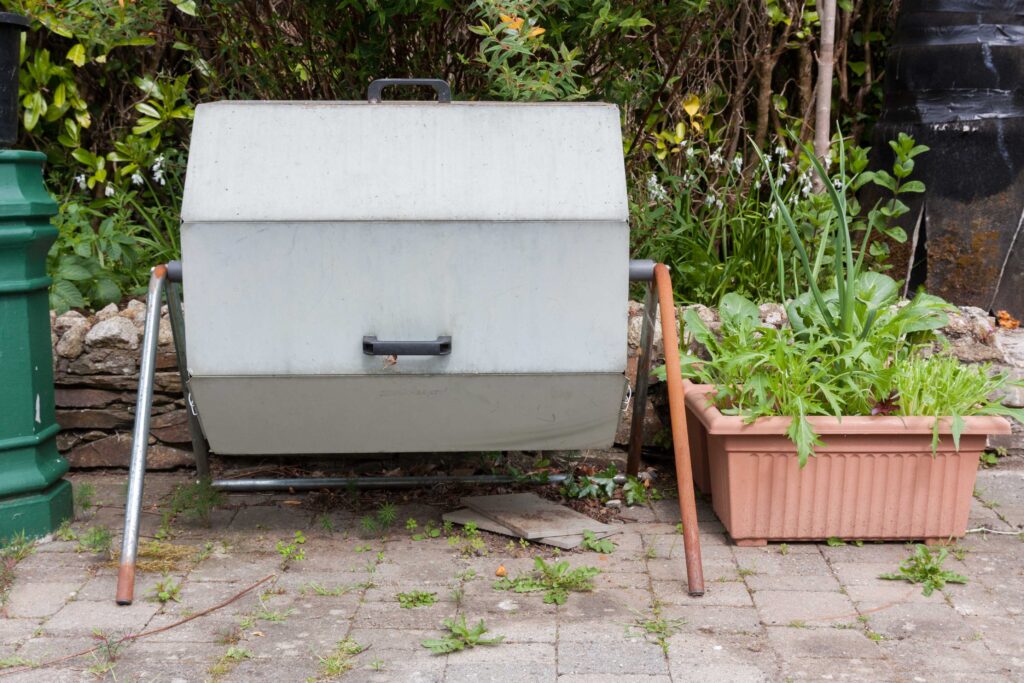
Is your compost steaming? A steaming pile means that you have a large community of microscopic critters working away at making compost. Good job!!
Think twice before adding citrus peels, onions and garlic. These materials may repel earthworms, which are vital to a flourishing garden. To learn more about what to use and what to avoid (and why), read below and visit the EPA website.
Compost Recipe
A healthy compost pile should have much more carbon than nitrogen. A basic rule of thumb is to mix 50% green materials with 50% brown (some gardeners use slightly more brown).
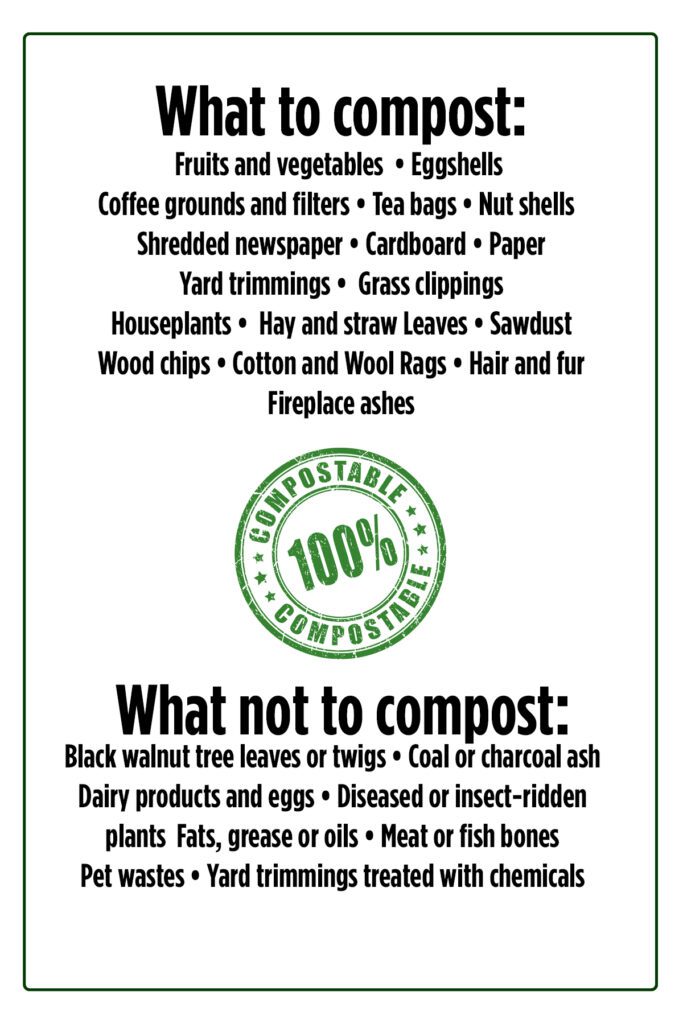
If you don’t have time to make your own, consider a buying a rotating compost tumbler. The tumbler makes it easy to mix the compost regularly. If you’re unable to generate enough compost at your home, consider Living Earth’s organic compost.